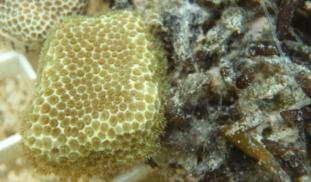Please wait...
About This Project
There is more algae on coral reefs than ever before and humans are to blame. Can we use next generation techniques to play "Dr. Doolittle" and find out just how the coral animals feel about living in contact with algae? We know that some algae can kill coral in the lab, but we also know that algae and coral can grow next to each other on the reef seemingly unaffected. What hidden effect is algae having on coral? How will that impact the way we survey and manage coral reefs to preserve them?
More Lab Notes From This Project

Browse Other Projects on Experiment
Related Projects
How do polar bears stay healthy on the world's worst diet?
Polar bears survive almost entirely on seal fat. Yet unlike humans who eat high-fat diets, polar bears never...
Uncovering hidden insect diversity associated with a likely undescribed gall-forming midge
Does a likely undescribed species of gall-forming midge (pers. comm. Ray Gagné) on Eriodictyon plants (Yerba...
Macrofungi of the California archipelago
The eight islands of the California Archipelago are a well-studied biodiversity hotspot — but we know almost...


